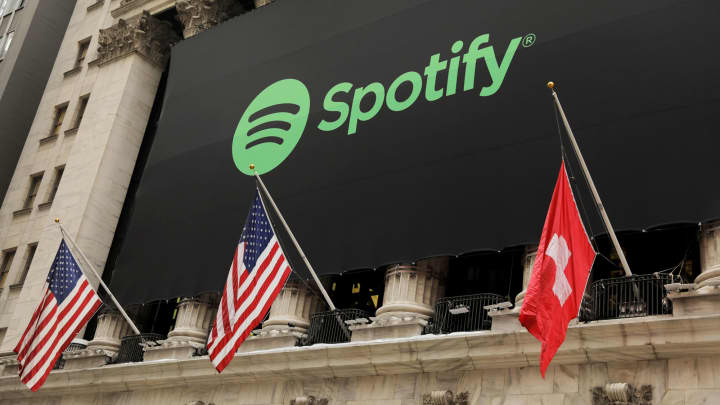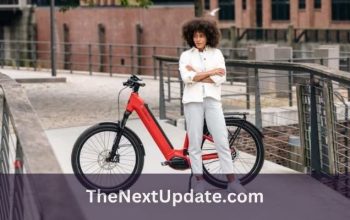Anchor vs Spotify Qa
Spotify has been steadily investing in podcast infrastructure over the past two years, and is positioned to become an audio leader. The company’s massive acquisitions of Gimlet, Parcast and Anchor, along with its ad offerings, have left the platform poised to build an end-to-end audio ecosystem.
The monetization strategy is clear: The company plans to launch an ad network called the “Spotify QA Anchorfischeraxios,” which will combine its music and podcast ad inventory into one place. Advertisers will be able to target ads across its original, exclusive and independent podcasts as well as podcasts distributed by Megaphone, the company’s podcast ad network it acquired last year.
Also Read: Lincoln and the For the People Act
1. What is Spotify?
Spotify is a popular music streaming service that offers access to a huge library of music and podcasts. The service has a free version and premium tiers that include ad-free listening, offline downloads, unlimited skips, and higher quality streams.
The free ad-supported version of Spotify comes with a few limitations, including frequent ad breaks that can kill your groove. If you don’t want to hear ads, the Premium tier is available for $10 a month.
While the Premium tier is more expensive than other music streaming services, it is worth it for many users. Premium subscribers can listen to music on demand, share songs with friends and family, create playlists, and much more.
Premium also has a few extra features that aren’t available in the free version of Spotify, like Family Mix and Duo Mix playlists, which recommend songs based on what different accounts on a Family or Duo plan are listening to.
Unlike other streaming services, Spotify uses a cache to store tracks you’ve previously listened to so that it doesn’t need to download them the next time you play them. This is a good feature for people who travel or don’t have an internet connection for long periods of time, as it means you can keep listening to your favorite tunes on the go.
Spotify also has an intelligent algorithm that learns what you like as you listen, so that it can recommend songs to you based on your tastes. It can even make personalised “Made for You” playlists based on your listening habits and favourite artists and songs. Plus, it’s always adding new content to its playlists, so you can discover tons of new music!
2. What is Anchor?
Anchor is a free podcast hosting service that’s easy to use and has a decent number of features. It doesn’t offer the same kind of stats and tracking as some of its competitors, but it’s ideal for those who don’t want to pay a lot and need a reliable hosting service.
An anchor is a device that’s used to hold a ship in place. It has flukes, or hook-like arms that dig into the seabed to keep it stable. It’s often used to prevent a boat from being swept away by wind or currents, and it can also be a powerful symbol.
In many cultures, an anchor symbolizes a strong bond with family or friends. It can be a reminder of a loved one who’s passed on, and it can also denote constant faith in the power of love and hope.
For Christians, an anchor is a sign of steadfast faith and loyalty to the Lord. It can also be a symbol of salvation and eternal life. In addition, it can be a meaningful gift for people who have a close relationship with the Lord, such as spouses or children.
There are several types of anchor text, each with their own meaning and importance to search engines. The best anchor texts are relevant to the page being linked to, while bad ones tend to be generic and uninteresting.
The most common type of anchor text is the blue, underlined text in a hyperlink. It’s important to optimize these links with keywords to increase the chances of ranking well in search results.
As with any type of link, the more natural and relevant the anchor text, the more likely it is that a user will click on it. That’s why it’s important to write good anchor text for every link you create.
3. What is Anchor’s strategy?
Anchor’s strategy is a framework for health systems and universities to build community wealth, including local jobs, businesses, investments, and other resources. It’s also an approach to help them navigate the complexities of economic, social, and environmental change that are at the root of many of their most significant challenges.
The term “anchor institution” refers to a nonprofit or public entity that is built in a community for the sole purpose of staying there. This can include hospitals, schools, art institutions, libraries, airports, and utility companies.
Often these institutions will not leave their communities and will hire, purchase goods and services from, and invest in the local economy to support their neighborhood. These efforts can be a critical component of addressing the root causes of many local problems, including poverty, violence, and racial inequality.
In addition to their social missions, anchors have significant purchasing power, and can prioritize contracts that support worker cooperatives or organizations with fair labor practices. This can make it difficult for fossil fuel companies to win contracts, which in turn creates more local energy job opportunities and enables pathways for local workers to gain skills and experience.
By embracing this role, anchors can activate in the transition toward a regenerative energy system that builds local community wealth. We identified three strategies for anchors to activate in this transition:
First, consider the strengths and needs of your community. This will give you a better idea of what resources and partners are needed to bring your strategy to fruition. Next, look at other plans and partnerships that exist in your community to see where there may be alignment or potential competition. Finally, build a shared value framework that shows the anchor leadership how working with you would support their goals and help advance them.
4. What is Anchor’s revenue model?
Anchor’s revenue model revolves around offering its software and hosting service for free, which enables new podcasters to enter the industry. It also helps Spotify beef up its own show catalog by introducing new content.
In addition, the company also offers a sponsorship feature that lets creators place an ad in their episodes, which can generate revenue. But monetizing through sponsorships can be a bit tricky to get right, especially if your show isn’t getting a lot of downloads or listeners.
According to several podcasters, however, Anchor’s sponsorship feature is not generating much in the way of revenue. Most of them say they were offered a sponsorship last year, but haven’t received a renewal or any other sponsorship opportunities since.
Another issue is that these sponsors can be very low on a CPM basis, meaning they only pay you a certain amount of money per thousand people your podcast reaches. This is a very low CPM, and it can make monetizing through this channel more challenging.
If you’re looking to monetize your podcast, it may be worth considering other platforms such as Patreon or SoundCloud. These platforms offer a more robust business model than Anchor and allow you to charge for your shows.
In addition, these services will often help you build a stable client base, which is incredibly important for freelancers and small businesses alike. This is because clients that pay you a large sum of money on a regular basis help you stabilize your cash flow, which is essential for sustaining your business.
Many freelancers and small businesses rely on anchor clients, which are those that pay them a large sum of money on a monthly basis. These clients can be a great way to increase your income, so it’s worth trying to secure at least 2 or 3 of them.
5. What is Anchor’s monetization strategy?
Anchor is a podcast creation app owned by Spotify that makes it easy to record and distribute your show. It also offers a unique feature for new podcasters: sponsorship opportunities.
The company’s software lets users create shows from scratch by simply recording audio into their phone. The company says this has launched 1 million new shows since 2020, and powers 70 percent of Spotify’s podcast catalog.
When Anchor launched in the US in November 2018, it promised to help podcasters monetize their shows by matching them with advertisers who want to promote their products to a target audience. It’s similar to a YouTube ad campaign: an advertiser can choose a series of episodes that they think their target audience will listen to, and Anchor will automatically insert the ads into those episodes.
However, some podcasters tell The Verge that Anchor’s sponsorship feature isn’t working out very well. They’ve received few, if any, sponsorship opportunities beyond those from Anchor or Spotify itself.
These sponsors don’t offer high ad impressions or CPM, meaning they’re less lucrative than typical podcast advertising. Plus, hosts can pass up sponsorship opportunities that they don’t feel fit their podcasts or their audience.
In addition to its sponsorships product, Anchor has a series of monetization initiatives that improve your potential for earning revenue. First, top Anchor podcasters in the US can now be part of the Spotify Audience Network (SAN).
They’ll receive more ad inventory and have a higher potential for earnings. They’ll also be able to add “Automated ads” into their shows, which are automatically inserted if the ad buyers buy an ad that’s targeted to the show they’re listening to.
Another monetization option is called “Listener Support.” This is where you can collect donations from your listeners through your show’s website or social media channels. You can also set up an account with a third-party payment processor like Stripe to receive your payments.




